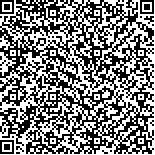Archive > Volume 46 Issue 7 > 2020,46(7):982-993. DOI:10.7519/j.issn.1000-0526.2020.07.010 Prev Next
Characteristics and Causes Analysis of the Warm and Wet Winter in China in 2019/2020
- Article
- Figures
- Metrics
- Preview PDF
- Reference
- Related
- Cited by
- Materials
Abstract:
The temperature in most areas of China was significantly higher than normal, and the precipita-tion was more than normal in the 2019/2020 winter. The main causes are as follows. The East Asian winter monsoon (EAWM) and Siberian high were both weaker than normal during the 2019/2020 winter, with significant intraseasonal variation of EAWM. The Arctic polar vortex (APV) was contracting in the polar region, with a strong intensity. The Arctic oscillation (AO) was in a positive phase with a strong intensity. The activity of Ural blocking high and the East Asian trough were all weak. The Euro-Asia was controlled by zonal circulation. The West Pacific subtropical high (WPSH) was significantly stronger than normal with westward and northward position. India-Burma trough (IBT) was active periodically. The WPSH and IBT were beneficial to water vapor transportation from Pacific Ocean and Indian Ocean to China. Diagnostic analysis of possible mechanism for weak EAWM in the 2019/2020 winter indicates that the warm SST in the equatorial Pacific in the fall and winter of 2019 and aroused strong and northward anticyclone in the northwestern Pacific, suppressing the development and southward invasion of the EAWM. In addition, the strong APV, and positive AO were not conducive to the development of Ural blocking high. And the East Asian trough was obviously weak. All these elements jointly lead to the zonal circulation in the middle and high latitudes of Euro-Asia and the weak EAWM.
Keywords:
Project Supported:
Clc Number:


Mobile website









